
views
Finding Your Undertone
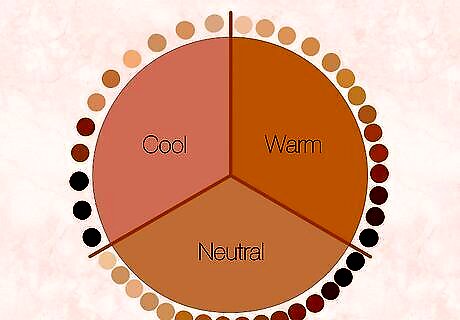
Foundations and concealers are divided into warm, cool, and neutral undertones. Your undertone is the true color of your skin, just beneath the surface. There are 3 possible undertones—warm, cool, and neutral—and knowing where you fall can help you find the perfect foundation and concealer shade. Sun exposure, rosacea, and acne can change the surface color of your skin, but the undertone never changes. Undertones are true for all nationalities. Those with darker skin sometimes have undertones that look somewhat ashen or gray. This is an olive skin tone, which falls under the neutral umbrella.

Examine the veins on the underside of your wrist to find your undertone. Look closely at the veins—what color are they? Blue is universal, so you need to determine whether your blue veins lean more towards purple or green in appearance. Be sure to do this in natural lighting since artificial lighting can change the way colors appear. Blue-purple veins indicate a cool undertone. Blue-green veins indicate a warm undertone. If you can't tell either way, this usually indicates a neutral undertone—both cool and warm undertones in equal parts.

Wrap a white towel or t-shirt around your face to examine your skin. Look closely—do you see a particular tint? The white of a towel or t-shirt makes your undertone easier to detect; however, this is only effective if you’re in natural light since fluorescent bulbs can distort the skin’s true undertone and create a deceptive greenish tint. A blueish tint indicates a cool undertone. A yellowish tint indicates a warm undertone. A greenish tint indicates a neutral undertone.
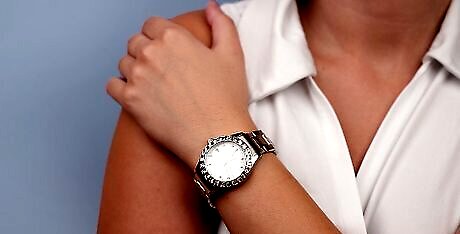
Reference your jewelry collection for more silver or gold pieces. What do you have more of—gold jewelry or silver jewelry? If you prefer gold jewelry because it looks more flattering on you, you probably have a warm undertone. If you lean more towards silver jewelry because it compliments you better, you probably have a cool undertone. If you aren’t sure, check your skin in the mirror against both gold and silver jewelry. If one doesn’t seem to flatter you more than the other, you probably have a neutral undertone.
Choosing a Concealer Shade

Match your concealer to your skin’s undertone. As with foundation, it’s important to pick a concealer based on your undertone. Unlike foundation, however, you’ll want to pick a concealer that’s either slightly lighter or darker than your skin tone, depending on where you plan on putting the product.

Go 1 to 2 shades lighter than your skin tone to neutralize dark areas. The goal of concealer is to even out skin tone by targeting small areas, so inspect your face closely. A common problem area for many people is under the eye due to the prevalence of dark circles. Going 2 shades lighter than your skin tone can help conceal dark areas. 1 shade lighter is generally preferable to brighten the eye and prevent “raccoon” or dark under eyes. If you have prominent undereye circles, look for a concealer with yellow tones to help diminish their appearance.
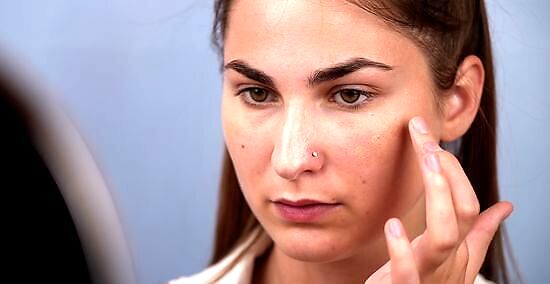
Match your foundation exactly to conceal large areas of the face. Areas of redness and most other skin issues are best covered with a concealer that exactly matches your foundation or skin tone. If you have trouble matching them exactly, go for a neutral beige with faint yellow shades. These tend to look good when applied anywhere on the face. Always test and apply concealer in natural light to get an accurate read of the shade. Avoid flesh-toned concealers with prominent pink, rose, peach, white, yellow, or copper shades.
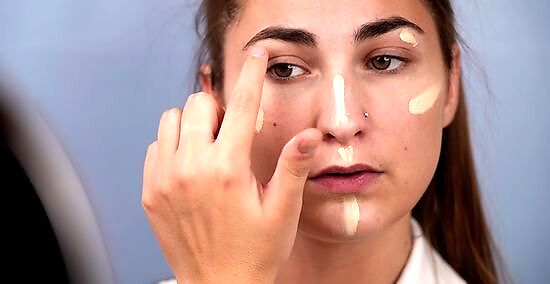
Pick a concealer 1 to 2 shades lighter than your skin tone for highlighting. To highlight, apply a concealer that’s lighter than your skin tone to the areas of the face that naturally catch the light—the top of the cheekbones, directly beneath the arch of the brow, down the center of the nose, and the Cupid’s bow. Highlighting with concealer can help you sculpt your face and give it added dimension.
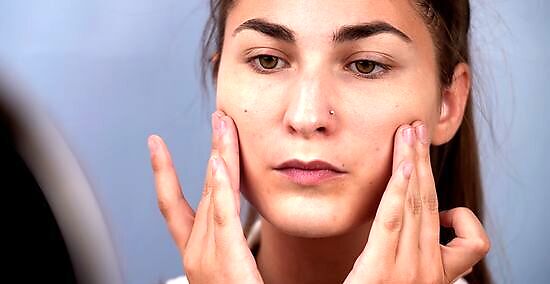
Opt for a concealer 1 to 2 shades darker than your skin tone for contouring. To contour, apply a concealer that’s darker than your skin tone to the natural hollows of the face—right below the cheekbone, along the jawline, and at the temple near the hairline.
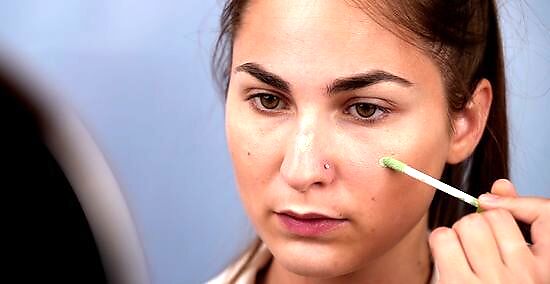
Address specific discolorations with color-correcting concealer. Color-correcting concealers come in shades that aren’t flesh tones. Their use is based on basic color theory—colors opposite one another on the color wheel cancel each other out. For instance, green is directly across from red on the color wheel, so you can use a green concealer to neutralize redness. The color correction palette works like this: Lavender neutralizes sallow/yellowness skin. Yellow offsets deep purple tones caused by dark circles and/or scarring. Green counteracts the redness caused by ruddiness, pimples, and rosacea. Pink cancels out the blue cast on lighter skin tones. Orange/salmon counteracts blue, dark purple, and/or grayish tones found in deeper skin tones.
Should concealer be lighter than foundation?
Your concealer should be a shade lighter than your foundation. You should always apply foundation before concealer, so the lighter concealer shade will cancel out any discoloration left uncovered by your foundation. Avoid using a concealer that’s more than one shade lighter than your foundation, as it may leave you with a ghostly or pale appearance. If you do accidentally use a concealer that’s too light for your face and foundation, blend a small amount of your foundation into your concealer. Apply this new formula as you would your regular concealer.
Selecting a Foundation Shade
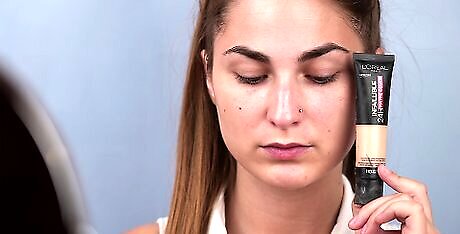
Match the undertone of your skin first. Most brands will identify the complementary undertone on the product label, so always check if a foundation’s undertone matches yours before purchasing. If the product doesn’t provide the undertone information, there are certain keywords you can look for: Warm undertones: beige, golden, tan, caramel, and chestnut Cool undertones: porcelain, rose, sable, and cocoa Neutral undertones: ivory, buff, nude, and praline
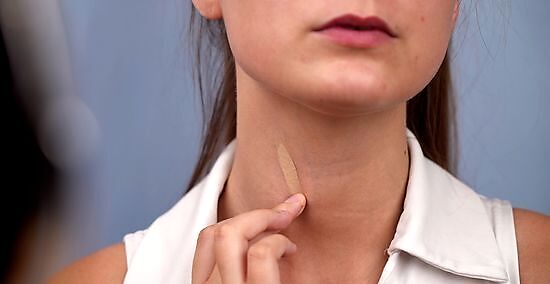
Match a product’s color with your face, neck, and décolletage. The neck tends to be the lightest, and the face and décolletage (your chest) are usually slightly darker. Even though all 3 won't match each other exactly, there will be a predominant shade that covers the most area. Choose the foundation shade that looks closest to that predominant shade. Test the foundation on both your face and your neck to ensure you’ll end up with even color. Check your jawline after applying foundation. Make sure the skin above it (your face) also matches the skin below it (your neck).
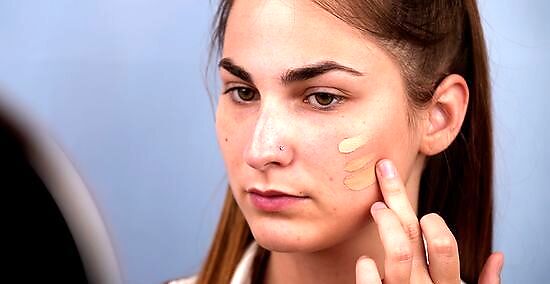
Try 3 different shades to compare. Foundation shades usually fall somewhere on a loose spectrum of fair, moderately fair, medium, medium deep, deep, and very deep. Even if you feel certain you know your shade, test out 3 different ones for comparison. Choose the ones that most closely match your skin color. Use enough of each one to get a good read on it—a tiny dab is not enough. Use a streak about 2 inches (5 cm) long for testing. The right foundation shade will disappear into your skin and look natural.

Wear white and test makeup in good lighting. Wearing other colors can distort how you perceive your skin tone, so be sure to wear white when you’re testing shades. Always use good lighting and try to use more than one light source to confirm a shade looks consistent.




















Comments
0 comment